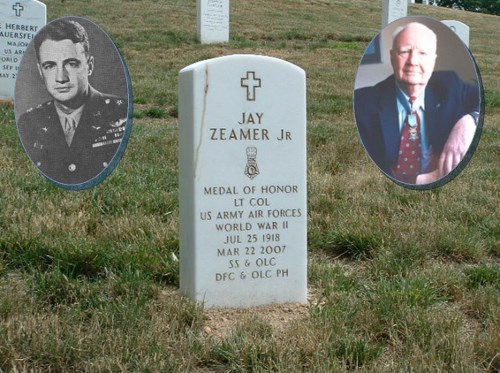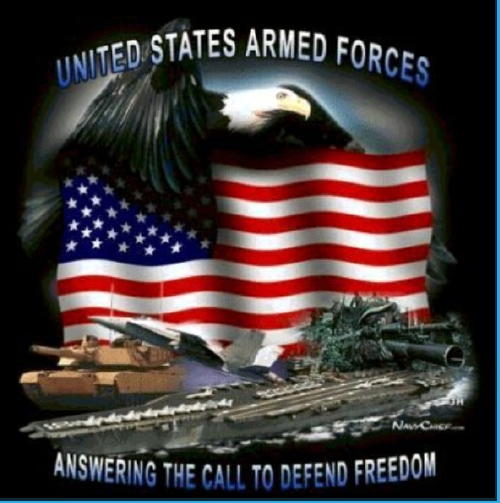~ Hall of Heroes ~ Lt. Col. Jay Zeamer, Jr. Info from here, here and here. |
|
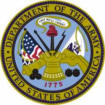  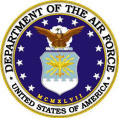 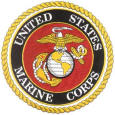  |
 Jay Zeamer Jr. (July 25, 1918 - March 22, 2007) was a pilot of the United States Army Air Forces in the South Pacific during World War II, and received the Medal of Honor for valor during an air mission on June 16, 1943. Zeamer is one of only seven known Eagle Scouts who also received the Medal of Honor. The others are Aquilla J. Dyess, Robert Edward Femoyer, Eugene B. Fluckey, Mitchell Paige, Benjamin L. Salomon, and Leo K. Thorsness. Jay Zeamer Jr. (July 25, 1918 - March 22, 2007) was a pilot of the United States Army Air Forces in the South Pacific during World War II, and received the Medal of Honor for valor during an air mission on June 16, 1943. Zeamer is one of only seven known Eagle Scouts who also received the Medal of Honor. The others are Aquilla J. Dyess, Robert Edward Femoyer, Eugene B. Fluckey, Mitchell Paige, Benjamin L. Salomon, and Leo K. Thorsness.Watch "Old 666" video here. |
Born in Carlisle, Pennsylvania, Zeamer grew up in Orange, New Jersey, the son of a traveling-salesman. He spent many summers at Boothbay Harbor, Maine, where he enjoyed rowing a homemade boat in the 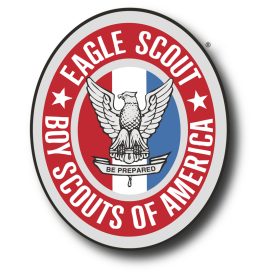 harbor. harbor.Zeamer became an Eagle Scout at the age of thirteen, and enrolled in Culver Military Academy in Culver, Indiana, at fourteen. He attended the Massachusetts Institute of Technology after graduating high school and enrolled in the Reserve Officers Training Corps as a prospective officer in the U.S. Army Corps of Engineers. With a developing interest in aviation he joined a local flying club in nearby Norwood for lessons. In 1939, while still at MIT, Zeamer was commissioned an infantry second lieutenant in the Army Reserve. He graduated in 1940 with a degree in civil engineering and was assigned to Fort Dix, New Jersey. Zeamer was discharged to enlist in the Regular Army as a flying cadet and completed primary flight school at Glenview, Illinois, where his leadership skills earned him the position of Captain of Cadets. In March 1941 he received his wings and a commission in the U.S. Army Air Corps after graduating from advanced flight school at Maxwell Field, Alabama.  His initial assignment was an engineering officer service testing the new B-26 Marauder with the 22nd Bombardment Group (Medium), based at Langley Field, Virginia, following which he was assigned to the group's 19th Bombardment Squadron as a co-pilot. On December 8, 1941, the 22nd BG was transferred from Langley to California to fly anti-submarine patrols off the West Coast of the United States. In March 1942 the 22nd BG was deployed to Australia, where Zeamer flew his first combat mission as a B-26 co-pilot on April 6, 1942. 1st Lt. Zeamer transferred to the 43rd Bombardment Group (Heavy) in September 1942, a group that flew the four-engined B-17 Flying Fortress, as a supernumerary with group headquarters. His initial assignment was an engineering officer service testing the new B-26 Marauder with the 22nd Bombardment Group (Medium), based at Langley Field, Virginia, following which he was assigned to the group's 19th Bombardment Squadron as a co-pilot. On December 8, 1941, the 22nd BG was transferred from Langley to California to fly anti-submarine patrols off the West Coast of the United States. In March 1942 the 22nd BG was deployed to Australia, where Zeamer flew his first combat mission as a B-26 co-pilot on April 6, 1942. 1st Lt. Zeamer transferred to the 43rd Bombardment Group (Heavy) in September 1942, a group that flew the four-engined B-17 Flying Fortress, as a supernumerary with group headquarters. On September 14, 1942, the 43rd BG moved to a forward base at Port Moresby, New Guinea, where it conducted both bombing and photographic reconnaissance missions. Acting primarily as an intelligence officer, Zeamer began flying combat again in October, filling in on combat crews needing a second pilot, and on a mission in November to photograph Simpson Harbor at Rabaul, New Britain, earned the Silver Star. Promoted to captain in April 1943 and becoming a pilot in the 43rd BG's 65th Bomb Squadron, Zeamer was awarded a second Silver Star for a night mission to Wewak in May 1943. |
On June 16, 1943, volunteered to fly an unescorted B-17 nicknamed Old 666 to Buka, a small island off the north coast of Bougainville, a 1200-mile round-trip mission, to photograph Japanese installations and map the west coast of Bougainville as far south as Empress Augusta Bay in preparation for Allied landings scheduled for early November. Apparently unbeknownst to Allied intelligence, the Japanese had moved about 400 fighters into the Solomon Islands on June 15. The mission was Zeamer's 47th in combat. the west coast of Bougainville as far south as Empress Augusta Bay in preparation for Allied landings scheduled for early November. Apparently unbeknownst to Allied intelligence, the Japanese had moved about 400 fighters into the Solomon Islands on June 15. The mission was Zeamer's 47th in combat.The photo reconnaissance mission was without incident, although Zeamer's crew reported observing 20 fighters taking off from Buka airfield. Zeamer continued south to the mapping run and shortly before its completion, his B-17 was intercepted by five Japanese fighters attacking from the front. Though wounded in the attack, bombardier 2nd Lt. Joseph Sarnoski continued to fire his nose gun, shooting down two airplanes, including a Mitsubishi Ki-46 "Dinah" reconnaissance plane. Zeamer also destroyed one of the attackers using a nose gun fired remotely by a switch on the flight control column. A 20-millimeter cannon shell exploded in the nose of the B-17, severely wounding Sarnoski and knocking him out of the compartment. Sarnoski dragged himself back to his station and continued to fire until he died at his position. The B-17's oxygen and hydraulic systems were destroyed, as were the pilot's flight instruments, in the initial attack. Zeamer, injured with a broken leg and numerous fragment wounds, dove the bomber steeply from its assigned mission altitude of 25,000 feet to approximately 10,000 feet (where the crew could survive without use of the oxygen system), estimating the altitude by an increase in engine manifold pressure. An estimated 17 fighters began a series of attacks after the bomber leveled off, waging a 45-minute battle until low on fuel. Zeamer saved the B-17 by taking evasive action to disrupt their deflection, and the crew of the B-17 shot down at least two additional fighters. Zeamer refused first aid for his wounds and flew the B-17 until the fighters broke off the engagement. Lapsing in and out of consciousness, he assessed the battle damage to the bomber, and concluded they would be unable to climb over the Owen Stanley Mountains, instructing the copilot, who was unwounded, to make an emergency landing at an Allied  fighter airstrip at Dobodura, New Guinea. Without operable brakes or flaps because of the destroyed hydraulic system, the B-17 was ground-looped by the co-pilot. The casualties were one killed (Sarnoski) and six wounded. fighter airstrip at Dobodura, New Guinea. Without operable brakes or flaps because of the destroyed hydraulic system, the B-17 was ground-looped by the co-pilot. The casualties were one killed (Sarnoski) and six wounded. At first thought dead from a massive loss of blood, Zeamer survived the ordeal, although nearly losing his leg during recovery. Colonel Merian C. Cooper, chief of staff to the deputy commander of the Fifth Air Force, Major General Ennis Whitehead, recommended Zeamer receive the Medal of Honor, to which Fifth Air Force commander General George Kenney concurred. He received the award from Chief of the Army Air Forces General Henry H. Arnold on January 16, 1944, at the Pentagon. Sarnoski was also awarded the Medal of Honor, the only instance of World War II when two members of one crew were honored for separate acts of heroism in the same combat engagement. All other members of Zeamer's crew received the Distinguished Service Cross. |
| Zeamer was promoted to major on July 8, 1943, and lieutenant colonel in April 1944. He spent fifteen months of hospital recovery at Walter Reed General Hospital and returned to active duty at Mitchel Field, New York as a Tactical Field Air Inspector. On January 18, 1945, Zeamer retired from the USAAF on disability. He returned to MIT and obtained a Master's degree in aeronautical engineering in 1946. Zeamer then worked for a series of aerospace companies: Pratt & Whitney in East Hartford, Connecticut, followed by Hughes Aircraft in Los Angeles, California, and finally Raytheon in Bedford, Massachusetts, until his retirement in 1968. After his retirement, Zeamer moved to Boothbay Harbor, Maine, where he enjoyed rowing in the harbor, as he had done in his childhood. He also had a second home in Albuquerque, New Mexico. enjoyed rowing in the harbor, as he had done in his childhood. He also had a second home in Albuquerque, New Mexico. Zeamer married in 1949, and with his wife Barbara raised five daughters: Marcia, Jacque, Jayne, Susan, and Sandra. Barbara Zeamer stated that he rarely talked about his wartime experiences or the medal. "I think he didn't feel he deserved it. He was so close to his bombardier [Joseph Sarnoski] and he felt terrible about his being killed." Zeamer died in a nursing home at age 88. At the time of his death, he was the last living Medal of Honor recipient of the Army Air Forces. Zeamer's funeral was held on March 26, 2007, with a burial at Arlington National Cemetery. The Governor of Maine, John Baldacci, ordered that flags in the state be flown at half-staff on the day of the funeral. Zeamer's Medal of Honor mission was featured on The History Channel and in the first chapter of the 1968 Martin Caidin's Flying Forts: The B-17 in WWII. Caidin describes "Old 666" as similar to the "Leper Colony" B-17 of the movie Twelve O'Clock High, but that Zeamer gathered his crew of misfits himself. The MIT "Lt. Col. Jay Zeamer Squadron" of the Arnold Air Society and, on October 17, 2008, the Pope AFB headquarters building were named in Zeamer's honor. |
|
Medal of Honor citation

The President of the United States in the name of The Congress takes pleasure in presenting the Medal of Honor to: ZEAMER, JAY JR. (Air Mission) Rank and organization: Major, U.S. Army Air Corps. Place and date: Over Buka area, Solomon Islands, June 16, 1943. Entered service at: Machias, Maine. Birth: Carlisle, Pa. G.O. No.: 1, January 4, 1944. Citation:
- On 16 June 1943, Major Zeamer (then Captain) volunteered as pilot of a bomber on an important photographic mapping mission covering the formidably defended area in the vicinity of Buka, Solomon Islands. While photographing the Buka airdrome. his crew observed about 20 enemy fighters on the field, many of them taking off. Despite the certainty of a dangerous attack by this strong force, Major Zeamer proceeded with his mapping run, even after the enemy attack began. In the ensuing engagement, Major Zeamer sustained gunshot wounds in both arms and legs, one leg being broken. Despite his injuries, he maneuvered the damaged plane so skillfully that his gunners were able to fight off the enemy during a running fight which lasted 40 minutes. The crew destroyed at least 5 hostile planes, of which Major Zeamer himself shot down one. Although weak from loss of blood, he refused medical aid until the enemy had broken combat. He then turned over the controls, but continued to exercise command despite lapses into unconsciousness, and directed the flight to a base 580 miles away. In this voluntary action, Major Zeamer, with superb skill, resolution, and courage, accomplished a mission of great value.
|
| Please remember the Canteen is here to honor, support and entertain our troops and their families. This is a politics-free zone! Thanks for helping us in our mission! |
|







 Jay Zeamer Jr. (July 25, 1918 - March 22, 2007) was a pilot of the United States Army Air Forces in the South Pacific during World War II, and received the Medal of Honor for valor during an air mission on June 16, 1943. Zeamer is one of only seven known Eagle Scouts who also received the Medal of Honor. The others are Aquilla J. Dyess, Robert Edward Femoyer, Eugene B. Fluckey, Mitchell Paige, Benjamin L. Salomon, and Leo K. Thorsness.
Jay Zeamer Jr. (July 25, 1918 - March 22, 2007) was a pilot of the United States Army Air Forces in the South Pacific during World War II, and received the Medal of Honor for valor during an air mission on June 16, 1943. Zeamer is one of only seven known Eagle Scouts who also received the Medal of Honor. The others are Aquilla J. Dyess, Robert Edward Femoyer, Eugene B. Fluckey, Mitchell Paige, Benjamin L. Salomon, and Leo K. Thorsness. harbor.
harbor. His initial assignment was an engineering officer service testing the new
His initial assignment was an engineering officer service testing the new  the west coast of Bougainville as far south as Empress Augusta Bay in preparation for Allied landings scheduled for early November. Apparently unbeknownst to Allied intelligence, the Japanese had moved about 400 fighters into the Solomon Islands on June 15. The mission was Zeamer's 47th in combat.
the west coast of Bougainville as far south as Empress Augusta Bay in preparation for Allied landings scheduled for early November. Apparently unbeknownst to Allied intelligence, the Japanese had moved about 400 fighters into the Solomon Islands on June 15. The mission was Zeamer's 47th in combat. fighter airstrip at
fighter airstrip at  enjoyed rowing in the harbor, as he had done in his childhood. He also had a second home in
enjoyed rowing in the harbor, as he had done in his childhood. He also had a second home in 

